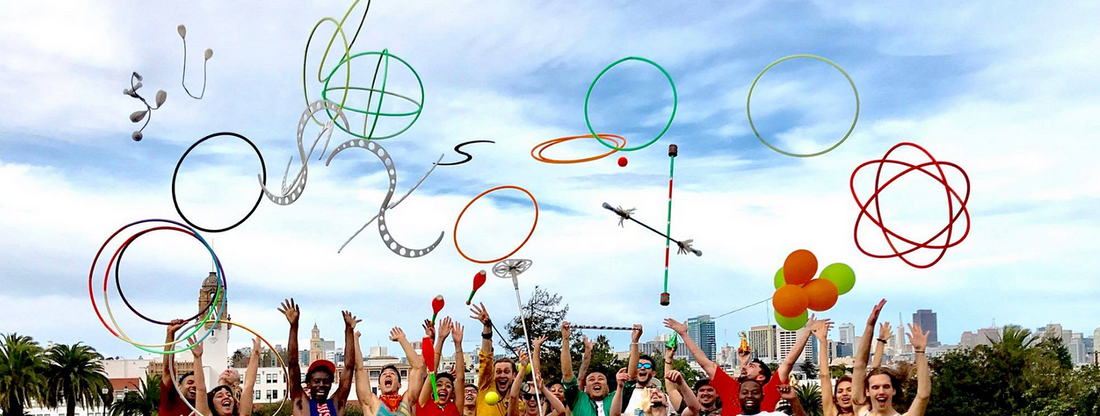
The Connection Between Movement and Mindfulness: Exploring Flow Arts
You may have heard of mindfulness as a practice of focusing on the present moment, but have you ever considered combining it with movement? This is where flow arts come in—a unique form of mindful movement that connects your body and mind. Flow arts involve manipulating objects like poi, staffs, and hoops to create rhythmic, flowing patterns. It's often described as a "moving meditation," blending physical exercise with mental clarity.
What Are Flow Arts?
Flow arts combine elements of dance, juggling, and object manipulation. Think of it as an art form where your body and the objects you’re handling move in sync. Practitioners, often called “flow artists,” work with tools like poi (balls attached to tethers), staffs, balance board, Vaha flute or hula hoops, creating continuous movements and patterns. The goal is to get into a flow state, where the movements feel smooth, effortless, and meditative.
How Flow Arts Encourage Mindfulness
Flow arts naturally bring you into the present moment. As you focus on coordinating your movements, you become more aware of your body’s actions and how the object moves through space. This heightened sense of awareness pulls your attention away from worries or distractions and directs it entirely toward the task at hand, which is a core principle of mindfulness.
Physical Benefits of Flow Arts
Flow arts aren’t just mentally engaging—they’re physically beneficial too! Here’s how:
- Improved Coordination: Regular practice helps you develop better hand-eye coordination as you learn to handle tools like poi or staffs.
- Increased Flexibility and Strength: Flow arts involve continuous movement, stretching, and body awareness, helping improve flexibility and tone your muscles.
- Enhanced Motor Skills: Manipulating objects with precision requires and builds fine motor skills, which is great for overall physical dexterity.
Mental Benefits: A Moving Meditation
Much like yoga or traditional meditation, flow arts help you achieve a sense of calm and clarity. By focusing on repetitive, fluid movements, you can enter a flow state where your thoughts and distractions fade away. Studies have shown that engaging in flow states regularly can reduce stress, increase creativity, and improve overall mental well-being.
How to Get Started with Flow Arts
Getting into flow arts is easy, and all you need is a basic tool like poi or a staff. Here’s how to begin:
- Choose Your Tool: Start with something simple, like a set of Vaha Flute, poi or a hula hoop.
- Learn the Basics: Watch tutorials or join a local flow arts group to learn the basic movements.
- Practice Regularly: Like any mindful practice, the more you do it, the better it feels. Dedicate a few minutes each day to practice.
- Focus on the Moment: While moving, concentrate on how your body feels and the rhythm of the object’s movement.
Conclusion
Flow arts are a beautiful way to merge movement and mindfulness. By engaging in this unique form of self-expression, you not only improve your physical coordination and flexibility but also tap into a deeper sense of calm and mental clarity. Whether you’re looking for a new way to stay active or seeking a mindful practice that connects body and mind, flow arts offer an exciting path to personal growth and well-being. Why not give it a try and see where the flow takes you?
